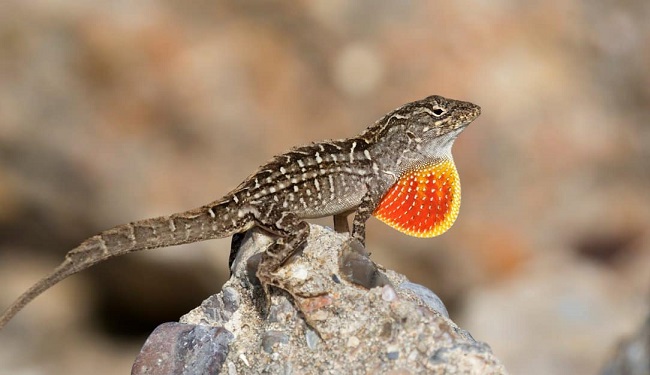Florida, with its subtropical climate and diverse ecosystems, is a hotbed for herpetofauna, including a variety of small lizards.
From native species to exotic invaders, these intriguing reptiles contribute to the rich biodiversity of the state. This guide explores the distinctive breeds of small lizards you can spot across Florida.

Common Native Lizards in Florida
Here are some of the common lizards of Florida:
Read Also:
Green Anole (Anolis carolinensis)
The Green Anole, sometimes referred to as the American chameleon, is a native species. These lizards have the unique ability to change their color depending on their mood, temperature, or humidity.
However, their color variations are typically limited to shades of green and brown. They are arboreal creatures, often found in trees and shrubs around homes, gardens, and forests. Green Anoles feed on small insects and spiders.
Brown Anole (Anolis sagrei)
The Brown Anole is an invasive species from Cuba and the Bahamas. These lizards have established themselves strongly in Florida and are commonly spotted in gardens and yards.
They are characterized by their brown color, elongated snouts, and a large, extendable dewlap under their neck. Their diet consists of various insects, spiders, and even other small lizards.
Southeastern Five-lined Skink (Plestiodon inexpectatus)
This lizard is identifiable by the five distinct stripes running from its head to its tail, which fade as the lizard ages. Juvenile skinks have bright blue tails that also fade with age.
Their preferred habitats are forested or partially forested areas where they hide under logs, debris, or in burrows. They consume a wide range of insects and spiders.
Ground Skink (Scincella lateralis)
As the smallest skink in North America, Ground Skinks have a slender body and a small head. They prefer moist, shaded areas and are often found under leaf litter or under rocks and logs. Their diet consists of small insects, especially spiders, beetles, and ants.
Cuban Green Anole (Anolis porcatus)
The Cuban Green Anole is very similar in appearance to the native Green Anole. However, it has a bolder light stripe down its side and a larger head.
They’re primarily arboreal and inhabit trees and shrubs. These lizards feed on insects, spiders, and occasionally small lizards.
Mediterranean Gecko (Hemidactylus turcicus)
These lizards have a distinct light tan color with a somewhat bumpy texture. Their eyes are large, lidless, and have vertical pupils.
They are nocturnal creatures and are often found in urban areas, hiding in crevices during the day. Mediterranean Geckos feed on small insects and spiders.
Brown Basilisk (Basiliscus vittatus)
The Brown Basilisk, also known as the “Jesus Christ lizard,” has the unique ability to run on the surface of the water on its hind legs, hence the name.
They are greenish-brown and have a large crest on their head, back, and tail. They inhabit areas near water and are most commonly found in South Florida. Brown Basilisks feed on insects, flowers, and small vertebrates.
Each of these lizards plays a unique role in Florida’s ecosystem, contributing to its biodiversity and helping control pest populations. They are fascinating to observe and study, reflecting the state’s rich wildlife heritage.
Read Also:
Conclusion
Florida’s small lizards, from the Green Anole to the Mediterranean Gecko, offer a glimpse into the state’s remarkable biodiversity. By understanding and appreciating these species, we can better contribute to the conservation of Florida’s unique wildlife.
























